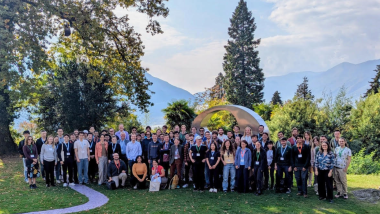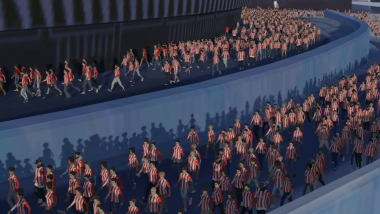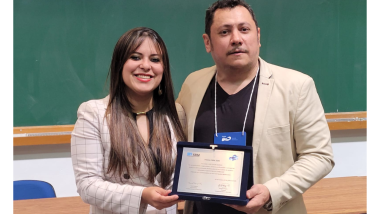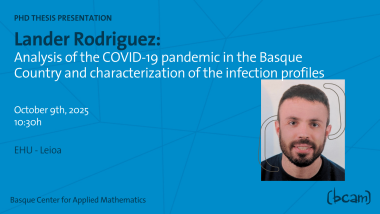Understanding Algebraic Geometry, Singularity Theory, and Commutative Algebra
- Ilya Smirnov leads a research project funded by the "Europa Excelencia" call of the State Research Agency, exploring three essential mathematical areas in the world of equations and geometric shapes: the intersection of Algebraic Geometry, Singularity Theory, and Commutative Algebra to strengthen mathematical connections.
Ramón y Cajal and Ikerbasque Research Fellow Ilya Smirnov leads a new research project funded through the "Europa Excelencia" call by the State Research Agency. This project, named "LEMUR," lies at the intersection of three fundamental areas of mathematics: Singularity Theory, Algebraic Geometry, and Commutative Algebra.
Algebraic Geometry is a branch of mathematics that studies geometric shapes defined by systems of polynomial equations. For example, in school we learn that equations y = x2 and y2 + x2 = 1 represent a parabola and a circle on the xy-plane, but the shapes get more complicated as their equations get more complicated. Singularity Theory, on the other hand, aims to understand the local geometry of the shape around special (hence, singular) points, such as self-intersections. Finally, Commutative Algebra is more about the study of equations themselves, perhaps attempting to solve them.
The LEMUR project has a fundamental purpose: to strengthen the connections between local algebra and algebraic geometry. To achieve this, it will address crucial issues related to the creation of stable moduli spaces and the nature of the allowed singularities in these spaces.
One of the central topics of algebraic geometry is theory of moduli. One aspect of it is to understand how shapes deform and what shapes can be deformed into each other, where a deformation is understood as a variation of a gradual variation of a coefficient in a otherwise fixed system of equations. Unfortunately, even if one starts with a smooth shape its deformation might have singularities. As an intuitive example, a circle is smooth, but by pressing on it from opposite sides we create the figure shaped as “8”, which has a self-intersection singularity.
It is difficult to tell what shapes are limits of smooth ones. Instead, a convenient approach is to extend smoothness to a suitable notion of “stability”, so that a deformation of a stable shape is still stable. The Geometric Invariant Theory provided an approach to construct a notion of stability; it was developed by David Mumford in 60’s. For his work on moduli theory Mumford received in 1974 the Fields medal, the highest honor in mathematics.
Mumford found a restriction on the local algebra of singularities on his stable shapes, giving a new application of commutative algebra to algebraic geometry and singularity theory. Mumford’s restriction, given in terms of multiplicity theory, provides a new class of singularities, but its theory was not developed further at that time, perhaps due to lack of tools. LEMUR aims to close this gap by utilising the recent advances in algebra and developing new tools.
Ilya Smirnov's leadership in this project is crucial as he brings his expertise and knowledge in these interconnected mathematical fields. The funding provided through the "Europa Excelencia" call from the State Research Agency will enable this project to progress and contribute to the expansion of our understanding in the field of algebraic geometry and singularities in stable varieties. This project represents an exciting advancement in mathematical research and has the potential to positively impact various disciplines.
Related news
About the center
Research
BCAM people




